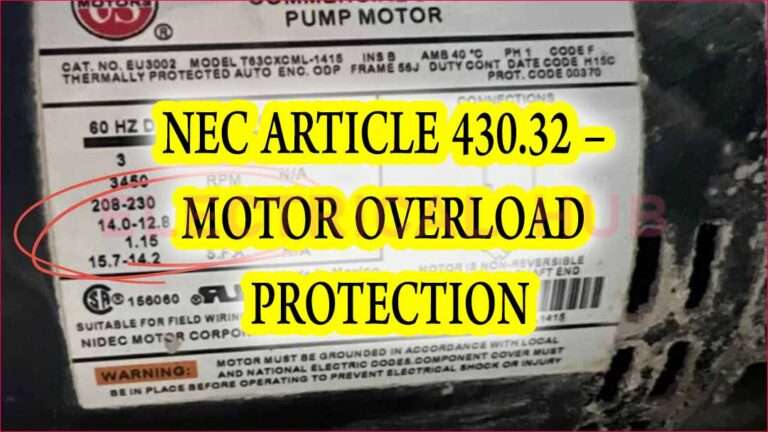Electrical Manhole Sizing Calculator – Accurate Guide for Utility and Electrical Design
Electrical manholes are an essential part of any underground electrical network. They provide safe access to cables for maintenance, inspection, and future expansion. Choosing the right size of an electrical manhole is critical for ensuring safety, functionality, and compliance with standards. An electrical manhole sizing calculator simplifies this task, making it easier for engineers, contractors, and designers to determine the correct dimensions based on cable types, numbers, and conduit arrangements.

Table of Contents
What is an Electrical Manhole?
An electrical manhole is a structure that allows safe entry into underground cable systems. These manholes serve multiple purposes:
- They facilitate cable pulling, jointing, and termination.
- They provide access for maintenance and inspection.
- They help in the segregation of high-voltage and low-voltage cables.
- They allow future expansion of the network without digging new trenches. Access our powerful online calculator now Electrical Diversity Calculator for accurate Load Estimation and efficient electrical Design.
Manholes can vary in shape and size depending on the number of cables, the voltage level, and the available space. A poorly sized manhole can lead to congestion, difficult maintenance, and safety hazards.
Electrical Manhole Sizing Calculator
Determine recommended manhole internal dimensions from duct bank layout, cable bend radius, working clearance, and fittings. Includes live preview and detailed outputs.
– Enter duct bank rows and columns, duct OD and spacing. Add conduit entry counts per face to reflect multi-side entries.
– Provide the largest cable OD and bend factor (×OD) to size bend radii and sweep space. Set working clearance, wall thickness, and accessory allowances (racking, pulling irons).
– Specify target internal depth and sump depth. Adjust cover type and margins, plus conduit setback and bell allowances for penetrations.
– Click “Calculate” to see recommended internal manhole length, width, and depth; opening size (clear); minimum cover size; and a checks table (duct footprint, bend radius, setbacks, and working space).
– Cross-check against your local code/manufacturer standards. This tool provides engineering-style estimates; final design must meet project specifications.
Formula checks: – Duct bank footprint: span = spacing × (count − 1) + ductOD. – Bend radius: R_min = factor × cableOD. – Internal length: ≥ max(long-span + entry setbacks + bend envelope + rack/pulling space, working clearance). – Internal width: ≥ max(short-span + setbacks + bend envelope, working clearance). – Opening clear size excludes wall thickness. Cover size = opening clear + 2×cover margin. – Sump volume: footprint × sump depth (liters via mm³→L).
Importance of Electrical Manhole Sizing
Proper manhole sizing is crucial because it:
- Ensures safe access for technicians.
- Provides adequate space for cable bending radius.
- Prevents overcrowding, reducing fire hazards.
- Allows room for future expansion.
- Complies with electrical standards and regulations. Make your task simple with our online tool electrical cable size calculator
Incorrect sizing can lead to costly rework, cable damage, and even accidents. Using an electrical manhole sizing calculator helps avoid these issues by calculating the exact dimensions needed based on various parameters.
How Electrical Manhole Sizing Calculator Works
An electrical manhole sizing calculator is a tool that helps determine the appropriate dimensions of a manhole automatically. The calculator considers several factors, including:
- Number of cables and conduits.
- Type of cables (low voltage, medium voltage, high voltage).
- Cable diameter and insulation thickness.
- Minimum bending radius of cables.
- Required working space inside the manhole.
- Depth of the manhole.
The calculator uses formulas based on standards such as IEC, NEC, and local electrical regulations to provide accurate results. Explore our professional online tool for quick calculations kw to cable size calculator
Key Parameters Considered
1. Cable Diameter and Number:
The total cross-sectional area of all cables determines the manhole width and height. More cables require larger manholes.
2. Cable Bending Radius:
Cables cannot bend sharply. The minimum bending radius must be maintained to avoid damage. A standard formula for minimum bending radius is:
| Cable Type | Minimum Bending Radius |
|---|---|
| LV Power Cables | 12 × cable diameter |
| MV Power Cables | 15 × cable diameter |
| Fiber Optic Cables | 20 × cable diameter |
3. Working Space:
Adequate space is needed for personnel to work safely. Typically, a minimum of 600 mm is required for one worker, and 900 mm for two.
4. Manhole Depth:
Depth is calculated based on the depth of the underground cable, soil type, and local regulations. Experience fast and accurate results using our online tool cable size calculator uk
Advantages of Using an Electrical Manhole Sizing Calculator
Using a dedicated calculator for manhole sizing offers several benefits:
- Accuracy: It eliminates human errors in manual calculations.
- Time-saving: Quick results save hours compared to traditional methods.
- Compliance: Ensures adherence to standards and regulations.
- Future-proofing: Calculates dimensions that allow for future expansion.
- Cost Efficiency: Proper sizing avoids unnecessary excavation costs.
Standard Sizes of Electrical Manholes
Electrical manholes come in various sizes depending on the number of cables and conduits. Common dimensions include:
| Number of Cables | Width (mm) | Length (mm) | Depth (mm) |
|---|---|---|---|
| 2–4 | 1000 | 1000 | 1200 |
| 5–8 | 1200 | 1200 | 1500 |
| 9–12 | 1500 | 1500 | 1800 |
| More than 12 | 1800 | 1800 | 2000 |
These dimensions may vary based on local codes and cable types.
Steps to Use an Electrical Manhole Sizing Calculator
Using a manhole sizing calculator is simple. Most tools are user-friendly and require input in a few steps:
Step 1: Input Cable Details
Enter the type of cables, diameter, and total number of cables. Calculate instantly with our smart online tool cable size calculator australia
Step 2: Specify Conduit Type and Number
Select the conduit type (PVC, HDPE, or steel) and number of conduits passing through the manhole.
Step 3: Enter Depth and Length Requirements
Input the depth of the manhole from the surface and any specific length needed for maintenance purposes.
Step 4: Check for Working Space
Specify the number of workers expected to access the manhole.
Step 5: Calculate
Click the “Calculate” button to get the recommended width, length, and depth. The calculator also provides details like minimum bending radius and cable spacing.
Cable Arrangement in Manholes
Proper cable arrangement inside the manhole is essential. Incorrect placement can lead to:
- Excessive stress on cables.
- Difficulty in cable maintenance.
- Higher risk of electrical faults.
Common cable arrangements include:
- Vertical stacking: Suitable for multiple small cables.
- Horizontal stacking: Preferred for large or medium-voltage cables.
- Combination: Used for mixed cable types. Start using our easy-to-use online tool earthing cable size calculator
Design Considerations
When designing an electrical manhole, consider:
- Load: The number of cables and conduits passing through.
- Accessibility: Ensure space for workers and tools.
- Safety: Fire-resistant materials, proper lighting, and ventilation.
- Drainage: Manholes must have proper drainage to prevent water accumulation.
- Future Expansion: Extra space for additional cables in the future.
Materials Used
Manholes are typically made from:
- Reinforced concrete: Durable and strong.
- Brick masonry: Cost-effective for small projects.
- Precast concrete: Quick installation and high quality. Get instant results with our online tool earth cable size calculator
Safety Measures
Safety is critical in manhole design:
- Non-slip flooring to prevent accidents.
- Proper ladders and access points.
- Warning signage and barriers around manhole openings.
- Adequate lighting inside the manhole.
Common Mistakes to Avoid
While sizing electrical manholes, avoid these mistakes:
- Ignoring future expansion needs.
- Overcrowding cables.
- Not considering minimum bending radius.
- Skipping safety and ventilation requirements.
- Using outdated design standards. Access our powerful online calculator now star delta motor cable size calculator
Conclusion
An electrical manhole sizing calculator is an essential tool for engineers and designers. It ensures accurate sizing, safety, and compliance with standards. By considering cable types, number, bending radius, working space, and future expansion, a well-sized manhole reduces maintenance difficulties and improves overall network reliability.
Try our free online tool today ev charger cable size calculator
Follow Us on Social:
Subscribe our Newsletter on Electrical Insights to get the latest updates in Electrical Engineering.
#ElectricalManhole, #ManholeSizing, #ElectricalDesign, #UtilityEngineering, #CableManagement, #ManholeCalculator, #ElectricalInfrastructure, #CivilAndElectricalWorks, #UndergroundUtilities, #ConstructionEngineering





